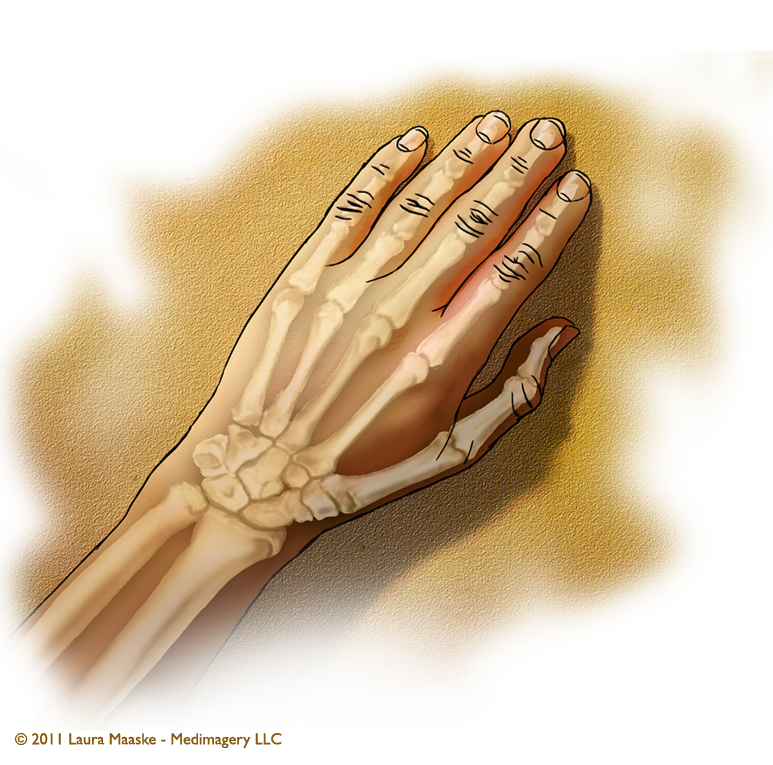
Hand Anatomy
The hand is a delicate and complicated structure with 27 bones, 34 muscles, 29 joints, 48 named nerves (3 major), 30 named arteries, and over 123 ligaments. Because of this complexity, one quarter of the brain’s motor cortex controls the muscle movements of the hand.
Interesting notes about the hand:
- The origin of the word, hand, is unknown, but may derive from a Gothic word, frahinthan, which means to “seize” or “pursue”. It could also derive from the English word, hunt, with it orgins in the idea “to seize”. Or, it could be a Swedish word, hinna, which means “reach”.
- Carpal tunnel syndrome (CTS), a condition resulting from compression of the median nerve at the wrist, affects 8 percent of women and 0.6 percent of men. CTS is more likely to be present in those with rheumatoid arthritis, Colles fracture, certain but undetermined occupations, hormonal or metabolic conditions such as thyroid disease and diabetes, and women using contraceptive pills. The incidence of CTS in women peaks around menopause. from the study, Carpal Tunnel Syndrome: A Nested Case-Control Study of Risk Factors in Women. By Susan Ferry, Philip Hannaford, Maria Warskyj, Martyn Lewis, and Peter Croft.
- Primates other than humans, such as chimanzees and monkeys, have opposable thumbs. What makes humans unique is an opposable ring finger and pinky. This is possible because the carpometacarpal joints of these fingers are particularly flexible. This is called ulnar opposition and it evolved in the human hand less than 3.2 million years ago.
Text Copyright © 2017 Medimagery – Laura Maaske LLC
Illustration © 2011 Laura Maaske – Medimagery LLC.
_________________________________
March 3, 2018
Laura Maaske, MSc.BMC.
Biomedical Communicator
Medical Illustrator
Medical Animator
Health App Designer
___________________________________
Laura Maaske – Medimagery LLC
Medical Illustration & Design
___________________________________
[jp_post_view]


Leave a Reply